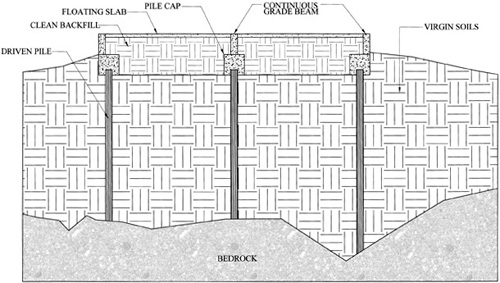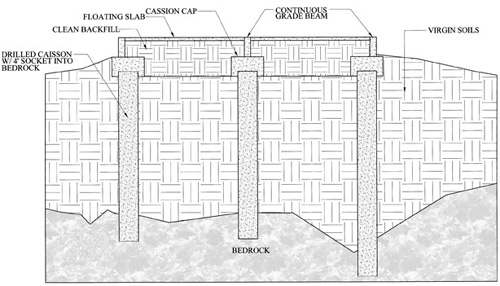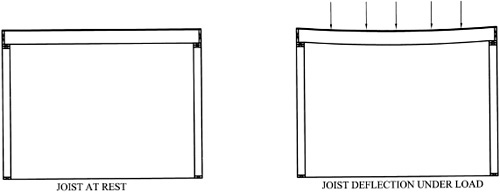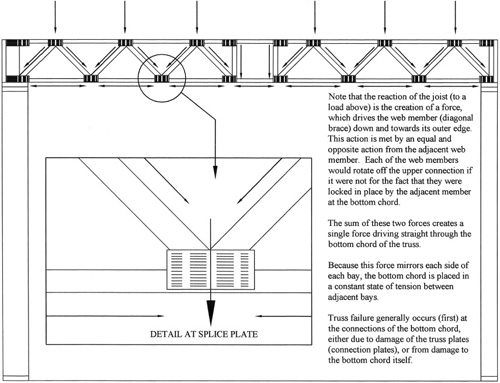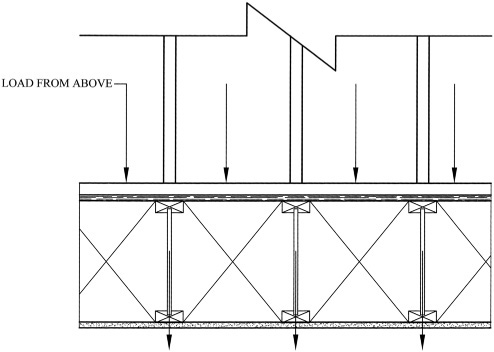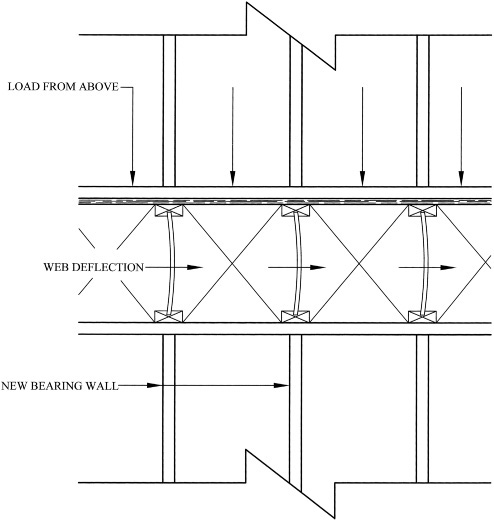I feel the need to spend at least some time with you discussing building codes, permits, inspections, and engineering.
A large number of people I come in contact with who are doing home studio construction tend to view building inspectors as evil ogres bent on stopping them from doing what needs to be done to make their studios right. Nothing could be farther from the truth.
Building officials are simply doing their job, which is to ensure that a minimum standard of construction, which has been established to help provide safe buildings for people to occupy, is met.
When you walk into an official’s office with something totally outside of their experiences, they (rightfully) look very hard at what you propose to do. They probably will require some documentation to reassure them that this meets (or exceeds) those standards established in the building codes. They will also perform periodic inspections on the work to ensure that the actual construction meets those same standards.
I have dealt with this for over 30 years, and you would be amazed at the number of times that an inspector notices a code violation on work done by professionals in their field. It could be something as simple as too many wires in an outlet box (which could create heat buildup within that box and cause a fire) to an incorrect nailing pattern used on a shear wall (which could cause a collapse of the building under wind or seismic loads).
I cannot stress enough the importance of these people and the jobs they do, and I recommend that you always pull a permit for any work that you intend to perform.
I have also found myself alarmed by the number of people who have posted their designs for construction on floors above grade that have not bothered to contact structural engineers to verify that the existing structure could take the additional loads they would be imposing on that structure. By “floors above grade,” I’m referring to first floors with basements below, second floors of buildings, and so on.
On more than a few occasions, after posting my concerns, I have had the parties contact me and thank me for stressing the need for them to hire an engineer to review their design intent. The engineer assured them that they could not do what they wanted and that the structure could not carry the additional load.
My insistence that they do this not only saved them a lot of money, but it also may have saved a life in the process. One thing about structural collapses is that generally they do not give any warning. One moment an overloaded joist is seemingly fine, and the next moment it’s gone.
Please do not add structural loads to buildings or cut and remove structural members without first checking with a structural engineer to verify that you can do this safely. Another thing that you need to understand is that my methods, although tried and true, do not and cannot cover each and every condition that exists in the world. Thus, you really need to consult with professionals in your area (I include building officials in that category) to make certain that you aren’t going to damage your structure (at worst), or throw your money away while in the process of constructing your studio.
Let’s take a look at a couple of examples to show you how important this really is. Understand that these are not the only times this matters, but rather are indicative of the need in general. One could fill a book with examples and still never scratch the surface of all of the problems that could arise.
Earth has certain bearing capacities, which are different from area to area throughout the world, and can’t be covered in this book. There are areas of the world that construct buildings above materials, which are referred to as expansive soils. These expansive soils are considered one type of unsuitable material for load-bearing construction to build on. There are other materials considered unsuitable—for example, earth containing large amounts of vegetation, structures built over old dump sites, and earth containing large amounts of loamy materials, just to mention a few.
For the purpose of this discussion though, let’s look at expansive soils. Expansive soils are earth generally containing large amounts of clay by volume, which can expand and contract greatly, depending on the levels of the water table in that locale. Often, the elevation of the water table varies by season.
When buildings are built in areas with expansive soils that contain varying water levels, then the structure is generally supported through the use of either piles or caissons. Piles are supports made of either wood, concrete, or steel, which are driven into the ground with a machine called a pile driver. These supports are often driven to bedrock, although they may be designed to support the load strictly through the friction that the earth places on the side surfaces of the pile.
There are then concrete pile caps poured above these piles with a series of concrete grade beams that connect the piles to form the building’s foundation. In this manner, the piles carry the entire building load without any transfer of load to the unsuitable soils that surround the building. Figure 12.1 depicts a simple pile foundation.
Caissons are similar to piles, except they are steel-reinforced concrete, which is poured on-site. A hole is bored in the earth (often right into the bedrock, which is referred to as a socket for the caisson to sit within), and a reinforcing cage is then lowered into the bored hole where concrete is placed. The remainder of the foundation construction is similar to that which I described for the piles. Figure 12.2 shows a simple caisson foundation.
In the case of homes built above these materials, typically the concrete slabs you see in the basement are a floating slab. The slabs carry no building loads and are designed to float up and down with the movement of the expansive soils beneath them. Some of those slabs may float as much as two to three inches between the high points in wet conditions and the low points in dry conditions.
Building a structure on top of these slabs could cause great structural damage to your home during a wet period if the new structure came into contact with the building structure above while lifting. Picture a slab lifting 3” and having the walls resting on it lifting your first floor joists that same 3”.
This is a disaster waiting to happen. It is just another reason for getting professionals involved during the design stage of your project to make certain that you are not going to perform work that can damage your home or perhaps even destroy it.
There are many other ways in which you could damage your home without realizing it. People mistakenly have the impression that bearing walls only exist if they are required to carry a load. Nothing could be farther from the truth. Any wall that is built in contact with the joists above it becomes a bearing wall, regardless of whether it needs to be or not.
Floor joists deflect under load conditions and then return to their normal condition when the load is removed. Figure 12.3 shows a floor joist in both conditions. The deflection is exaggerated so that you can see more easily what I’m describing.
In the case of simple framing members (for example, wood floor joists), this generally will not be a problem. However, in the case of floor trusses or composite floor joists, this could be a disaster waiting to happen.
The members of a floor truss are under constant compression and tension from live and dead loads placed upon them. Figure 12.4 shows the forces in play with a simple floor truss.
If you introduce a bearing point beneath them in a location for which the truss was not designed, you could cause a collapse of the truss. Figure 12.5 shows that same floor truss with some new forces in play from a wall introduced below. Introducing a bearing wall in the location indicated in Figure 12.5 causes stresses that could very well collapse the truss. Note that the reaction of the joist (with a wall placed below) is to create a condition where the loading of the web connection is no longer symmetrical.
This creates two conditions that could cause truss failure. The first can be seen in the large-scale detail in Figure 12.5. It’s the creation of a hinge point located in the bottom chord that centers in the truss plate. This causes a rotational force in the truss plate, which may cause plate failure.
The second condition is the loading on the bottom chord itself. A floor truss is typically constructed using 2x members installed on the flat for the top and bottom chords. The total loading is designed to carry from end to end.
If the truss we see is 20′ long and installed on 2′ centers, with standard design loading of 10psf dead load for truss weight and deck loading of the top chord, 10psf dead load for ceiling, mechanical, and electrical/mechanical/plumbing loads on the bottom chord, and 40psf live load, then the total load per truss would be 1,200 pounds. That would mean that 600 pounds of load was transferred to each outside bearing wall.
Introduce a bearing wall in any location along the body of that truss, and you just loaded the bottom chord with 50 percent of that load. Now we have a 2x member on the flat, and we expect it to carry a load of 600 pounds. Couple the two conditions, and you have a disaster in the making.
In the case of a floor constructed with composite joists, the manufacturers of these joists have very exacting requirements for the installation of their materials. Failure to follow these installation requirements can cause the product to collapse under load.
For example, adding a new wall in a basement, beneath the location of an existing bearing wall above, creates a condition where the load above is transferred through the composite joists to the wall below. These composite joists are not made to transfer that load and may fail by having the web of the joist collapse under the pressure. Figures 12.6 and 12.7 show the before and after conditions described previously.
In order to install walls safely below floor trusses and composite joists, you need to understand the proper construction techniques involved and then implement them as a part of your work.
Often, you can get this information from the manufacturer (if you can identify them). If not, a structural engineer can determine the forces at work and detail the proper construction techniques required to install the new work safely. Or you can simply install all of your structure in such a manner that it never comes into contact with those members above.
My point here is that there is a lot more to this than just throwing up some walls and building a room. Sometimes, there are variables at work that you know nothing about, so it pays to spend those few extra dollars (for permits and engineering) to make certain everything will be right when you finish your work.
The examples I used here are not just thoughts of mine. They come from real-life experiences I’ve been involved in, and I hope they show you the importance of the message I’m sending you.
Do it right the first time, and you’ll never be sorry that you did.

